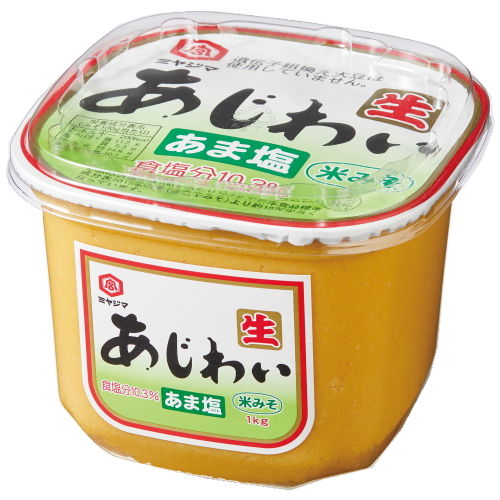Soybean Paste (Miso)
Soybean paste (Miso) is a Japanese traditional seasoning. Miso soup with seasonal ingredients is an integral part of the Japanese diet. Miso products produced in the Kyushu area tend to be sweeter than those produced in the northern part of Japan.
The Ingredients of Miso
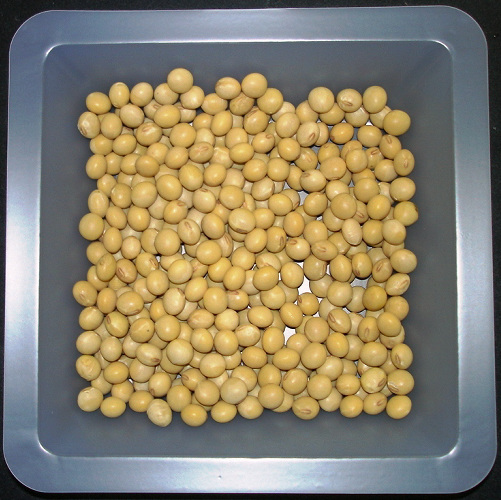
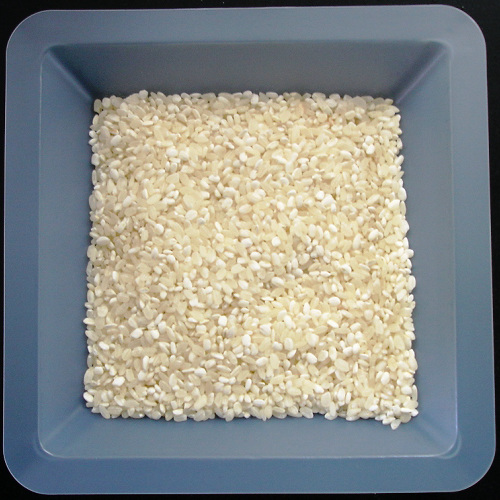
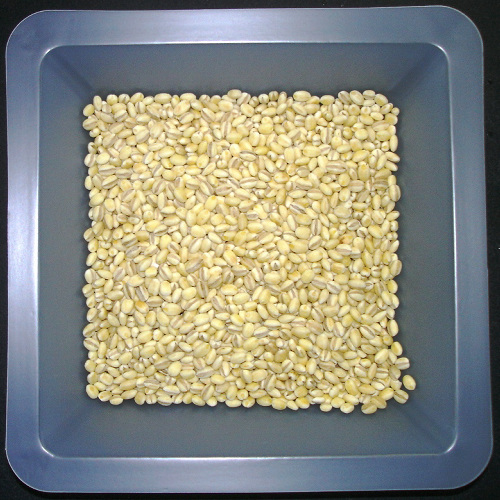
Types of Miso
・Kome miso (rice malt miso) is made by mixing soybeans, malted rice and salt. This material is then fermented. In Japan, kome miso has 80 percent share of the market.
・Mugi miso (barley-malt miso) is made from soybeans, malted barley and salt. Mugi miso is produced mainly in the Kyushu area.
・Mame miso (soybeans-malt miso) is made from soybeans, malted soybeans and salt. Mame miso is produced mainly in the Chukyo area.
Our company produces Kome miso, Mugi miso and Awase miso, while Awase miso is our main product. It is made from soybeans, salt and blended koji of malted rice and barley. “Awase” means “blended”.
Miso Manufacturing Process (for Awase miso)
(1) Cooking Ingredients
Soybeans are soaked in water, boiled and steamed. Rice and barley are soaked in water and steamed.
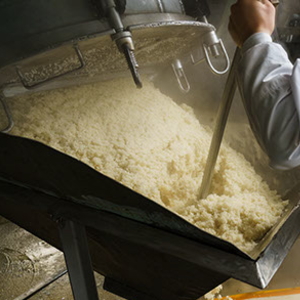
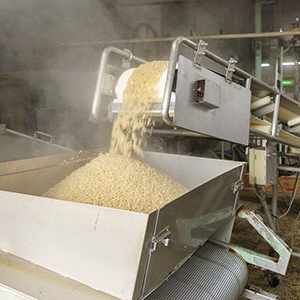
(2) Making koji
Koji mold (Aspergillus oryzae) is added to the rice and barley. Koji is made over three days. It contains various enzymes, which greatly contribute to the following miso fermentation and maturation process.
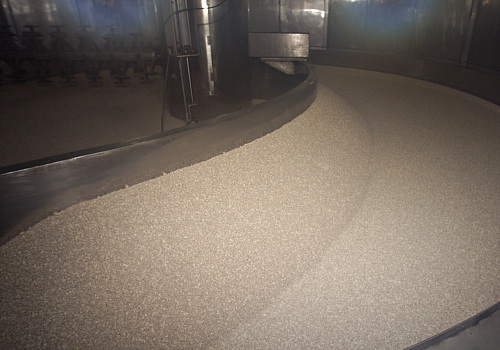
(3) Mixing
After mixing steamed soybeans, koji, salt and water, the mixture is put into fermentation tanks.
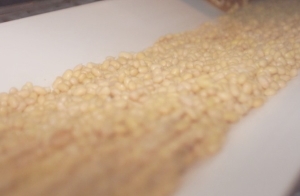
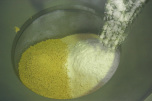
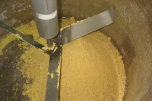
During fermentation and maturation of miso, the fermentation tanks are placed in a warm room. Several kinds of microorganisms and enzymes from the koji greatly contribute to this process, creating various flavors unique to miso.
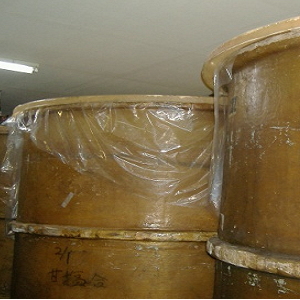
When fermentation is finished, miso is inspected for its quality and then filled into containers such as plastic boxes and bags.
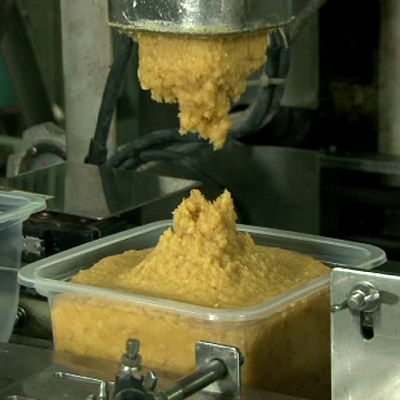
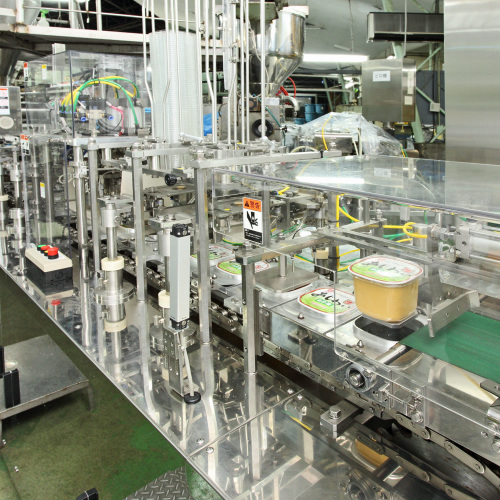
Miso Making Process
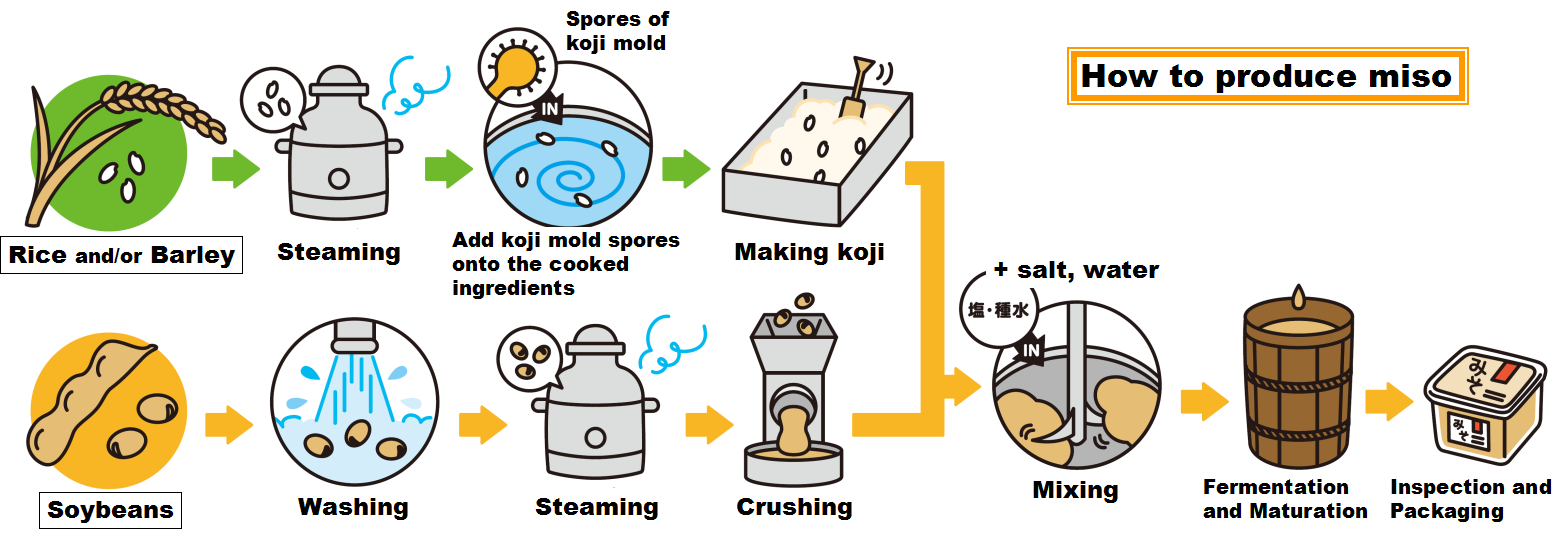
Our Typical Miso Products
Awase Miso (Barley and Rice Miso)
Mutenka Raw Awase Miso (produced using only locally-grown ingredients)
This is additive-free Awase Miso (Rice-Barley Blended Miso) brewed using Saga-produced barley, rice and soybeans. Rice-Barley Blended Miso is highly appreciated in the northern Kyushu region. Since the ratio of rice in this product is relatively high, it has milder and sweeter flavors.
| Net Weight | 470g, 850g |
| Best Before Period | Six months |
| Container | Plastic Package |
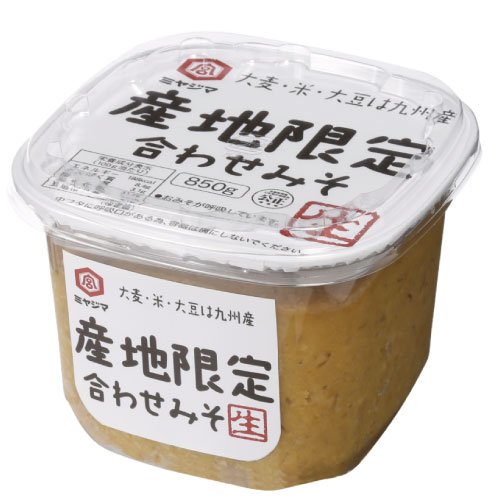
Saga Mutenka Miso
This is an additive-free miso elaborately produced using barley, soybeans and rice harvested in Saga, and Ichinoshio Sea Salt obtained from the sea water of the Genkai Nada Sea.
| Net Weight | 500g |
| Best Before Period | Six months |
| Container | Plastic Package |
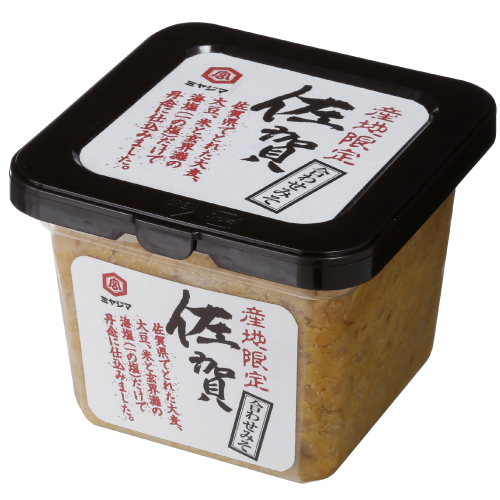
Low Salt Awase Koji Miso Produced in Kyushu
This awase miso features straight sweetness from rice and rich savory taste from barley, both of which are grown in farmland in Kyushu. By increasing the amount of Koji, the amount of salt in this product is reduced by 17% while keeping its deliciousness.
| Net Weight | 470g |
| Best Before Period | Six months |
| Container | Plastic Package |
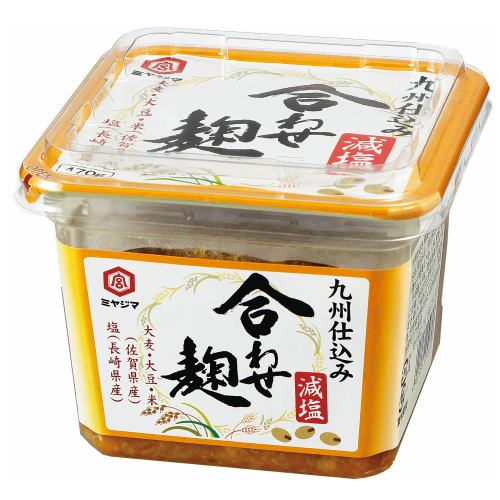
Ajiwai Light Salty Awase Miso
This is a blended miso produced using barley and rice, cutting back the amount of salt to bring out mild salty taste. Miso soup cooked using seasonal ingredients is really delicious. The amount of salt equivalent in this product is 9.1g per 100g.
| Net Weight | 500g, 700g, 1kg, 2kg |
| Best Before Period | Six months |
| Container | Plastic Package |
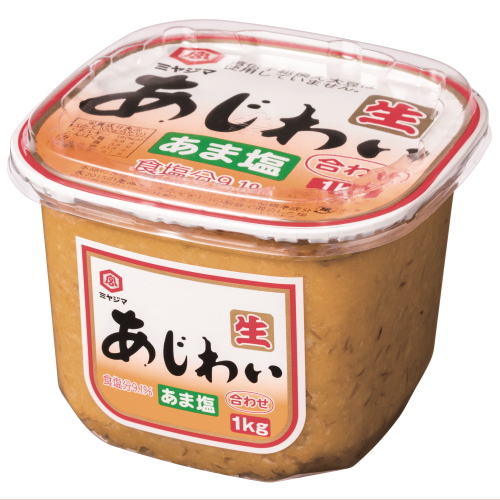
Rice Miso
Ajiwai Light Salty Rice Miso
This rice miso features mild salty taste by reducing the amount of salt. The amount of salt in this product is 10.3 g per 100g, which is lower by 15 % compared to the standard light color and salty miso listed on Standards Tables of Food Composition in Japan 2015.
| Net Weight | 700g, 1kg |
| Best Before Period | Six months |
| Container | Plastic Package |
